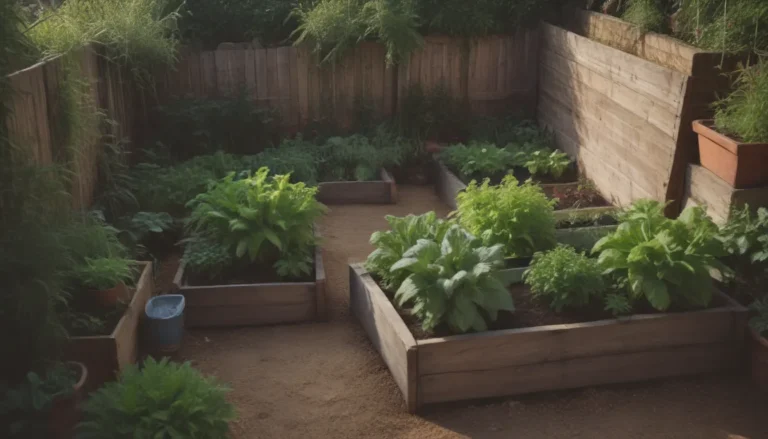How to Grow and Care for Nierembergia (Cupflower): A Comprehensive Guide to Beautiful Blooms

If you’re on the hunt for a stunning annual plant to brighten up your garden or containers, look no further than Nierembergia, also known as cupflower. With its delicate, star-shaped flowers in shades of blue, purple, and white, this plant is sure to add a touch of elegance to any outdoor space. In this in-depth guide, we’ll cover everything you need to know to successfully grow and care for Nierembergia, from planting to propagation and everything in between.
Getting to Know Nierembergia
Nierembergia plants are characterized by their finely textured leaves and saucer-like flowers that bloom from early summer to fall. While sizes can vary depending on the species, all Nierembergia plants are known for their ability to hold their vibrant colors even in the brightest sunlight. Whether you choose to start from seeds indoors or opt for potted nursery plants, Nierembergia is a versatile and rewarding addition to any garden.
Key Points:
- Nierembergia plants have stiff leaves that grow from multiple stems.
- Flowers come in blue, purple, or white with yellow centers.
- Plants bloom from early summer through fall.
- Can be started from seeds indoors or planted as potted nursery plants.
Nierembergia Care Tips
While Nierembergia plants are technically tender perennials, they are often grown as annuals in most regions. These low-maintenance plants thrive in moist, well-drained soil in full sun or partial shade. Regular watering and fertilizing, along with deadheading spent flowers, will help keep your Nierembergia plants healthy and blooming throughout the season.
Light:
- Nierembergia can be grown in full sun but prefers light shade in hot afternoon hours.
- Shade is especially important in regions with very hot summer temperatures.
Soil:
- Rich soil with good drainage is ideal for Nierembergia plants.
- Mulching helps retain moisture and keeps the soil cool.
Water:
- Water Nierembergia plants regularly to keep the soil consistently moist.
- Avoid overwatering to prevent root rot and fungal diseases.
Temperature and Humidity:
- Nierembergia does best in relatively cool summers and may decline in hot-summer climates.
- Thrives in both arid and humid environments with adequate soil moisture.
Fertilizer:
- Fertilize Nierembergia plants monthly with a complete fertilizer.
- Organic mulch can reduce the need for additional fertilizers.
Types of Nierembergia
When shopping for Nierembergia plants, you may encounter various species and cultivars with different sizes and growth habits. The two most popular species are Nierembergia scoparia and Nierembergia hippomanica, with varying heights and characteristics. Pay attention to plant labels and specifications to ensure you choose the right plant for your garden.
Popular Cultivars:
- Nierembergia hippomanica ‘Mont Blanc’
- Nierembergia hippomanica ‘White Robe’
- Nierembergia scoparia ‘Purple Robe’
- Nierembergia gracilis ‘Starry Eyes’
- Nierembergia ‘Summer Splash’
Pruning and Propagation
Regular pruning and deadheading will help Nierembergia plants produce additional blooms and maintain a tidy appearance throughout the growing season. Propagation can be done through stem cuttings or division of root clumps, providing you with new plants to enjoy in your garden.
Pruning:
- Pinch back young plants and deadhead spent flowers to encourage additional blooming.
- Cut back plants in fall if they decline in summer heat to stimulate new growth.
Propagation:
- Propagate Nierembergia by stem cuttings or dividing root clumps.
- Late fall is a popular time for propagation to continue plants over winter.
Growing Nierembergia from Seed
For gardeners looking to start Nierembergia from seeds, a few simple steps can ensure success. Plant seeds in flats with sterile potting soil, providing adequate light and moisture for germination. Once seedlings emerge, transplant them into rich, well-drained soil outdoors, where they will flourish with proper care and attention.
Seed Starting Tips:
- Start seeds indoors 8-10 weeks before the last frost date.
- Keep soil evenly moist for germination.
- Transplant seedlings outdoors after hardening off.
Potting and Repotting Nierembergia
Due to their compact growth habit, Nierembergia plants make excellent choices for containers, hanging baskets, and window boxes. When potting or repotting, use well-drained soil and ensure containers have proper drainage to prevent root damage. While potted Nierembergia plants may not winter well indoors, they can be discarded at the end of the season and replaced in spring for continued enjoyment.
Common Pests and Plant Diseases
Nierembergia plants are generally resistant to major insect and disease problems, but occasional pests like aphids, whiteflies, slugs, and snails may pose a threat. Keep an eye out for signs of infestation and treat promptly to protect your plants. Additionally, watch for tobacco mosaic virus, a disease that affects plants in the nightshade family, and take steps to prevent its spread in your garden.
Conclusion: Enjoying Nierembergia Blooms Year-Round
In conclusion, Nirmbergia cupflowers are a beautiful addition to any garden, providing vibrant blooms and delicate foliage that enhance outdoor spaces. With proper care and attention to their unique needs, you can enjoy Nierembergia plants year-round, whether grown as annuals or perennials in suitable climates. Remember to water, fertilize, and prune your plants regularly to encourage healthy growth and abundant blossoms. By following these tips and guidelines, you can create a stunning display of Nierembergia blooms in your own backyard.
Embrace the beauty of Nierembergia cupflowers and watch your garden come to life with color and charm!





